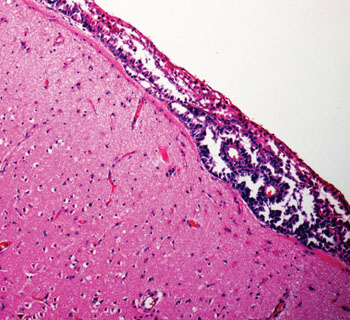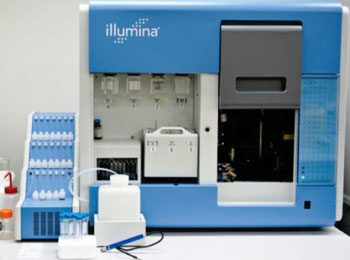Cerebrospinal Fluid Liquid Biopsy Characterizes Brain Tumors
By LabMedica International staff writers
Posted on 23 Nov 2015
The exploitation of cerebrospinal fluid (CSF)-derived circulating DNA as liquid biopsy promises a more accurate, effective and less invasive approach in unmasking the molecular characteristics of brain tumors.Posted on 23 Nov 2015
The use of CSF as liquid biopsy has the potential for prognosis, treatment, identification and tracking of brain tumor genomic alterations not only in real time but over time. Concentrations of circulating central nervous system tumor DNA are very low in plasma, but very high in CSF.
An international team of scientist led by those at the Vall d´Hebron Institute of Oncology (VHIO; Barcelona, Spain) performed whole-exome sequencing of 86 matched brain metastases, primary tumors, and normal tissue. In 15 of these cases, they collected additional samples including seven cases of multiple brain metastasis lesions and eight cases of extracranial lesions with regional lymph node metastases, extracranial metastases, or additional primary-tumor tissue. Board-certified neuropathologists confirmed the histologic diagnoses and selected representative fresh-frozen or formalin-fixed paraffin-embedded samples that had an estimated purity of equal to or greater than 40%.
The team performed whole-exome sequencing of extracted tissue using HiSeq or Genome Analyzer IIX platforms (Illumina, San Diego, CA, USA). They also performed deep targeted sequencing (median depth 455X) on a subset of primary-tumor samples using the Illumina HiSeq platform. Immunohistochemistry for HER2/NEU overexpression was used to validate amplification of erb-b2 receptor tyrosine kinase 2 (ERBB2) in the brain metastasis and primary tumor in one case. The study also focused on leptomeningeal carcinomatosis, the tumor infiltration of the fine film that covers the brain and spinal cord and which occurs as a metastasis of other tumors.
The scientists, observed branched evolution in all clonally related cancer samples, where all metastatic and primary sites shared a common ancestor yet continued to evolve independently. In 53% of cases, they found potentially clinically informative alterations in the brain metastases not detected in the matched primary-tumor sample. In contrast, spatially and temporally separated brain metastasis sites were genetically homogenous. Distal extracranial and regional lymph node metastases were highly divergent from brain metastases. They detected alterations associated with sensitivity to PI3K/AKT/mTOR, CDK, and HER2/EGFR inhibitors in the brain metastases. Genomic analysis of brain metastases provides an opportunity to identify potentially clinically informative alterations not detected in clinically sampled primary tumors, regional lymph nodes, or extracranial metastases.
Joan Seoane, PhD, a professor and Director of Translational Research at VHIO, said, “Our main limitation was that circulating tumor DNA levels for brain tumors are very low in plasma. But the brain has its own closed circuit of fluid, cerebrospinal fluid, which bathes the brain and spinal cord, and is therefore in direct contact with tumor cells and we found circulating tumor DNA in CSF at such high levels that we were able to detect and characterize tumors with a high degree of sensitivity.” The study was published on September 26, 2015, in the journal Cancer Discovery.
Related Links:
Vall d´Hebron Institute of Oncology
Illumina












 (3) (1).png)



